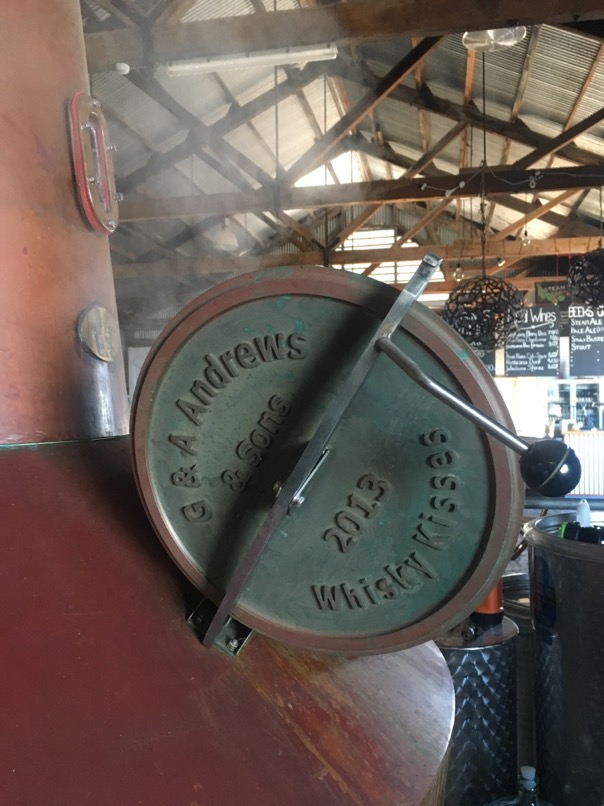Copper stills are gorgeous pieces of human technology. This beautiful metal has wonderful malleable qualities because of the structure of the atoms within it, enabling to it to be easily fashioned into desired shapes. In addition to its awesome thermal conductivity, I found out the reason copper is used is that it also has the ability to improve the flavour in the process of distillation.

Filling the still with whisky wash.
In the early days this year of learning the process of distilling whisky wash to low wines, and low wines to spirit I noticed significant difference in the amount of cleaning that had to be done after the first distillation compared to the second. After distilling newly fermented wash a black, flaky residue would be evident on the inside of the still after the first distillation. Once cooled running your hand along the surface to the door would result in this ‘residue’ flaking off and onto the floor beside the still. It was through this I found out more about the distinctive qualities of copper.

Residue left after the first distillation.
In Adam Roger’s book ‘Proof’ he writes about copper’s unique ability to bond with the sulphur compounds within the yeast bodies. As yeast converts sugars to alcohol through the process of fermentation it also produces sulphur compounds that remain inside the bodies of the yeast. When the fermented whisky wash is heated, any dead yeast cells left within the liquid rupture and hydrogen sulphide (rotten egg odours) and dimethyl trisulphide (rotten vegetable flavours) chemically react with the surface of the copper still. This chemical reaction allows for the off aromas and flavours to drop out of the liquid by forming new compounds, making spirit from a copper still cleaner, sweeter and more cereal like.
Amazing isn’t it!





